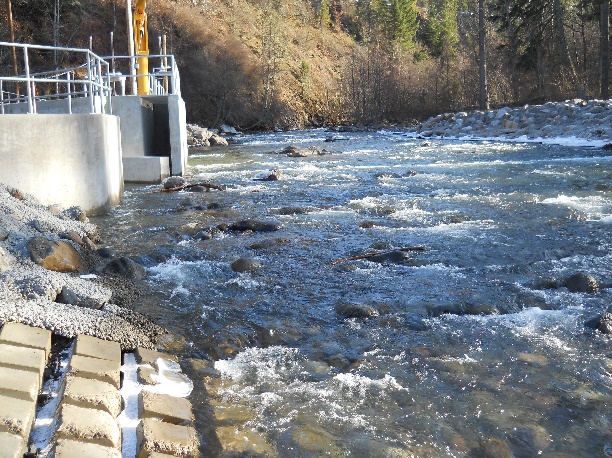
East Fork Hood RIver Irrigation District Diversion Upgrade
The Hood River Conservation Opportunity Area (COA) is located at the northern end of the East Cascades Ecoregion. The COA parallels the Hood River extending from the mouth of the Hood River at the Columbia River part way up the Middle Fork and encompassing the entire headwaters area of the East Fork. Bull trout, coastal cutthroat trout, coho and fall Chinook salmon and summer and winter steelhead are found in the COA.
Specifically, the East Fork Hood River provides spawning and rearing habitat for threatened winter steelhead, coho, and spring Chinook (Although spring Chinook were deemed extirpated, the East Fork has a self-sustaining run due to the release of Deschutes spring Chinook that began more than a decade ago). To improve fish passage, the East Fork Irrigation District (EFID), in partnership with the Confederated Tribes of the Warm Springs (CTWS), Oregon Department of Fish and Wildlife, and the Hood River Watershed Group, completed an upgrade of their diversion structure on the East Fork Hood River in October 2013. This included installation of an Obermeyer weir to replace the former push-up dam and construction of a fish ladder to provide passage around the dam during the summer irrigation season. Total project cost was $1.75 million, with funding from CTWS, Oregon Watershed Enhancement Board, USFS Title II funds, and EFID.

The pneumatically operated Obermeyer weir lies flat against the channel bottom during off-irrigation periods to allow natural river flows. During the spring and summer, the weir plates are remotely raised and lowered by inflatable rubber bladders, allowing the diversion amounts to be adjusted for water demand. The new fish ladder is a significant fish passage improvement. EFID has agreed to pass a minimum of 15 cfs down the bypass reach for the next 5 years, during which time flow will be studied to evaluate the final agreed upon minimum flow, which will fall between 15 and 40 cfs.